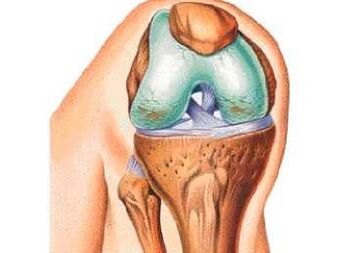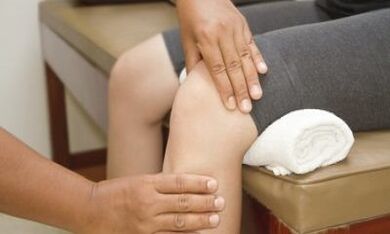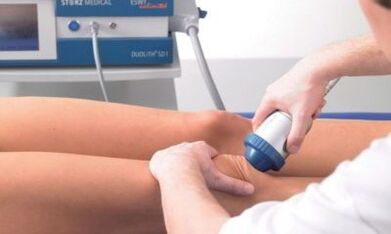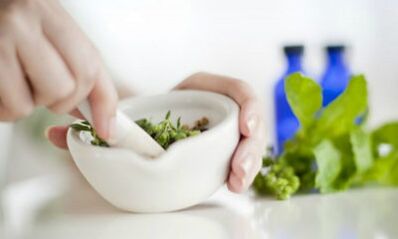Arthritis or osteoarthroom of the knee joint is a disease that occurs in the background of dystrophic changes with the subsequent development of connective tissue.There are many factors that affect the development of the disease, but all of them eventually lead to a violation of metabolism in cartilage.In medical literature, knee joint arthritis is called fertilization.
According to statistics, fertility occupies a leading position in the incidence of appearance among other articles.The disease brings severe discomfort, which can develop into pain when walking and calm.
Knowing early symptoms will help to suspect the development of pathology and cure it in the early stages.
Reasons
According to the medical classification, there is a primary and secondary fertility or joint of the knee joint.
Articulation of the knee joint can occur on the background of various diseases or act as a complication.When, due to a vague historical or clinical picture, the precise cause cannot be determined, the fertilization is called primary, but if the cause is known, then this arthritis is called secondary.
Article develops with age in almost all humans, on average, this period begins after 45-50 years of life.
The course and pathogenesis of primary and secondary articulation is the same and do not depend on the cause of the appearance.
The most common causes of arthritis and osteoarthol of the knee joint are:
- traumatic knee injury.
- The deformation of the joint in and out.
- reduction of one lower extremity.
- abnormal hyperactivity of the joint.
- Coarse dysplasia.
- Cover the cartilage.
- Osteomyelitis of the thigh and tibia.
- Rheumatoid arthritis or arthritis of any other etiology.
- Glucose metabolism.
- Metabolic diseases and hormonal diseases.
Injuries.After receiving the knee injury in the cavity cavity, inflammation can develop with high focus equipment.After the disappearance of the pro -inflammatory factors, the restoration or articulation procedures are activated.
Most of the time, the disease occurs on the background of a fragment with ligament rupture and damage to the bag and the surface of the cartilage of the joint.

Congenital deformities.Valgus or Varior deformation is found very often and without correct correction can be complicated by hard -to -knee changes.This is due to the fact that one of the knees falls more than the load than it should.
Reduce any of the lower extremities.As well as deformities, in the pathogenesis of the development of the disease, inappropriate knee weight distribution plays the role.
Knee superfluous.In this condition, the wear of the knee joint tissue can occur with subsequent degeneration and degeneration in arthritis.Hypermorsion often leads to spontaneous exacerbations and sprains of the joint capsule.
Handmade dysplasia.Due to the inappropriate growth of the engine surface in the knee joint, a pathological development of the connective tissue occurs.
Covering the joint.Pathogenesis is based on the deposition of salts in the joint cavity and the formation of a particular precipitate, which causes calcification with subsequent osteoarthritis.
Osteomyelitis.Inflammatory bacterial disease in which bone and joint destruction occurs.First, an anchoring are formed and only then hardening hardening.
Arthritis of any etiology.The most dangerous are rheumatoid arthritis, accompanied by autoimmune lesions of the heart and joints.
Diabetes, such as metabolic disorders, leads to a violation of the flow of nutrients in the joint and the cartilage shoot.
Portliness.With high body weight, the high loads are on the knees when walking and in posture.As a result of constant pressure, the blood flow to the knee joints decreases and atrophy develops with dystrophy.
Symptoms

Symptoms with the articulation of the knee joint depend on the stage of the pathological process.On this basis, analysis of the symptoms and the rate of their growth, you can evaluate the scale of changes in the cartilage tissue.
Knee joint symptoms:
- the presence of pathological sounds during movement.
- pain after load or calm.
- reduction of functions;
- edema and increasing common;
- Pathological outbursts, fractures and infertility.
- Temporary involvement that may occur when flexion and extension of the joint.
Click and crisis are not immediately observed, and if they notice, they do not pay due attention.Pathological sounds face the idea that a pathological process with the deposition of salts or the formation of osteophytes occurs in the cartilage gap.
Pain occurs due to the formation of calculations or osteophytes.Initially, the pain syndrome is not expressed, later it occurs only in the morning and passes after lunch, with the progression of the disease, the pain can happen at rest.
The reduction in joint functions is manifested in the rigidity of the movements and a reduction in their range.Depending on the scene, the restriction of movements can take a certain period of time and pass through calm.
Edema occurs due to inflammation and hypertension of the synovial fluid.There are also options when the skin is inflammatory above the joints.Such symptoms can be with red fever or rheumatism.
The outbreaks and the underground are displayed because the procedure applies to the bones and knee joints.
Clushing is a situation in which movement on any axis is completely limited.Such a symptom indicates the neglect of the process and the need for complex treatment.
Articulation

Sort osteoarthritis according to the following signs:
- Radiological symptoms.
- clinical manifestations;
- Laboratory data.
The most common and convenient classification is radiological, it is simple and understandable even for people without medical education.
Based on x -rays, four degrees of joints are distinguished in the knee joint:
- The decrease in the common gap is small and there are no osteophyst.
- The Interspoint gap is not full, but there are signs of small calculations or osteophytes.
- The Interspoint gap has a decrease in expression, there are osteophytics, the joint deformation begins.
- Lack of joints, bone deformation, ankylose and dystrophy.
As for the clinical picture, the following stages are distinguished:
- The mild compulsions are incompatible, appear in the morning and pass 30-60 minutes after awakening.
- The average grade is a severe symptoms, the sense of discomfort passes before lunch, the swelling is insignificant, it quickly evolves without treatment.
- A severe degree - characterized by constant pain, discomfort in rest, morning stiffness does not pass to dinner, ankylose, burgis and knee joint sinusitis.
Laboratory tests are taken into account, soy and leukocyte indicators are evaluated.It is also necessary to check the presence of a rheumatoid agent.
Diagnostic methods
The diagnosis of knee joint articulation is not complicated, but requires certain skills by the doctor.
Two types of diagnostic measures are distinguished:
- laboratory diagnosis;
- Organic diagnostics.
For the correct diagnosis, each of the methods must be taken into account and the image should be analyzed as a whole.
Laboratory
If there is suspicion of articulation, the attendance doctor defines the following tests:
- General blood and urine test.
- Biochemical blood test.
- Determination of antibodies to the rheumatoid factor.
- Determination of antibodies in their own cells.
Laboratory data do not carry out information on the development stage of the disease.
Organic

The organic diagnosis of arthritis includes the following methods:
- X -ray in two standard views.
- Minimally invasive arthroscopy.
- UZD exam.
- Ct?
- MRI?
- Ironing (according to indications).
Diagnostic radiation aims to determine the changes in the joint and to evaluate cartilage status.
Treatment
Treatment of articulation of the knee joint is a long process.The duration of treatment is due to the fact that the restoration of cartilage tissue occurs very slowly and in some cases it is completely impossible to restore the joint.
Modern methods of dealing with knee joint articulation include integrated measures aimed at removing inflammation, normalizing lifestyle and improving the metabolism of cartilage tissue.
There are such methods of treatment:
- pharmaceutical treatment;
- Exercise and massage treatment;
- folk medicine.
- Surgery.
The doctor predicts treatment based on the duration of the disease, the stage of development and its clinical manifestations.
Drugs
Pharmaceutical therapy aims to relieve pain and inflammatory reaction.For this purpose, the following medicines are prescribed:
- Non -impact anti -inflammatory.
- Coarse Protectors.
- Glucocorticoid.
- Cytostatic.
The knee joints have many side effects from arthritis, in the treatment it is necessary to monitor the condition of the gastrointestinal tract and kidney.
Often, arthritis medicines are prescribed for a long time, so less toxic drugs should be selected.
Gymnasiums
The treatment of articulation using exercise therapy is aimed at enhancing the muscles and knee joints.With dosage loads in the cartilage of the disease, metabolism improves and regenerative processes are accelerated.
Exercises must be selected individually taking into account the stage of the patient's disease and physical abilities.
Massage
Knee joint massage allows you to improve blood flow and relieve the nuisance.Proper massage can prevent the appearance of anchors and false joints.
Traditional
Treatment of articulation articulation at home should not be the main method for fighting pathology or can only act as an addition to the drug.

Home therapy includes:
- Reduce body weight.
- smoothing the hygiene of work and compliance with the status of the day.
- The fight against inflammation.
The anti -inflammatory effect has such herbs:
- Painting by Thyme and St.John's Wort.
- Burdock leaves;
- White cabbage leaves.
- Injections and decoction of dandelion and chamomile.
Operation
The function is determined by the ineffectiveness of conservative treatment or at the request of the patient.One of the main indications for surgery is the 4th stage of the disease with radiological characteristics.
During operation, surgeons can fully replace the hinge by intra -protection or change one of its parts.



























